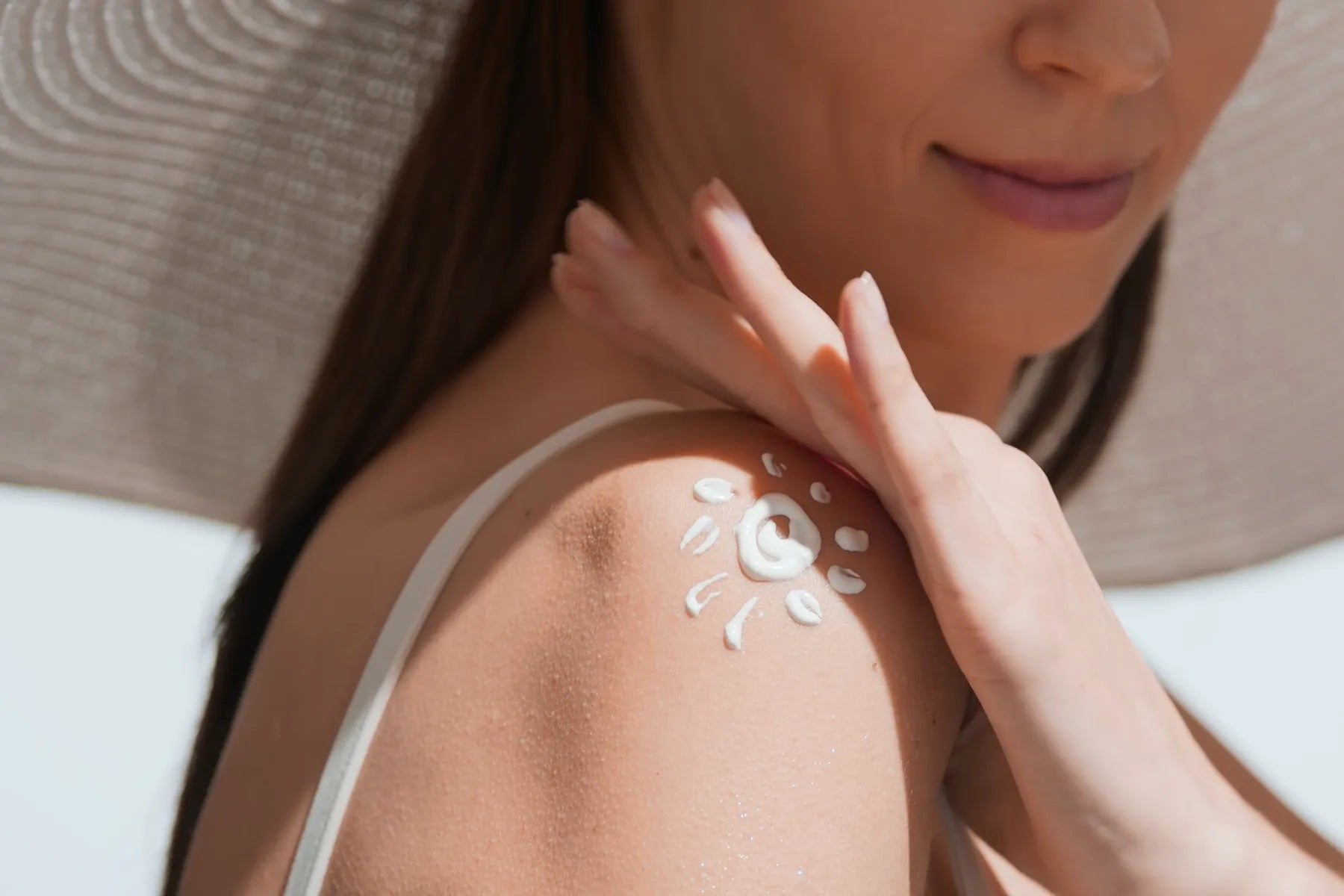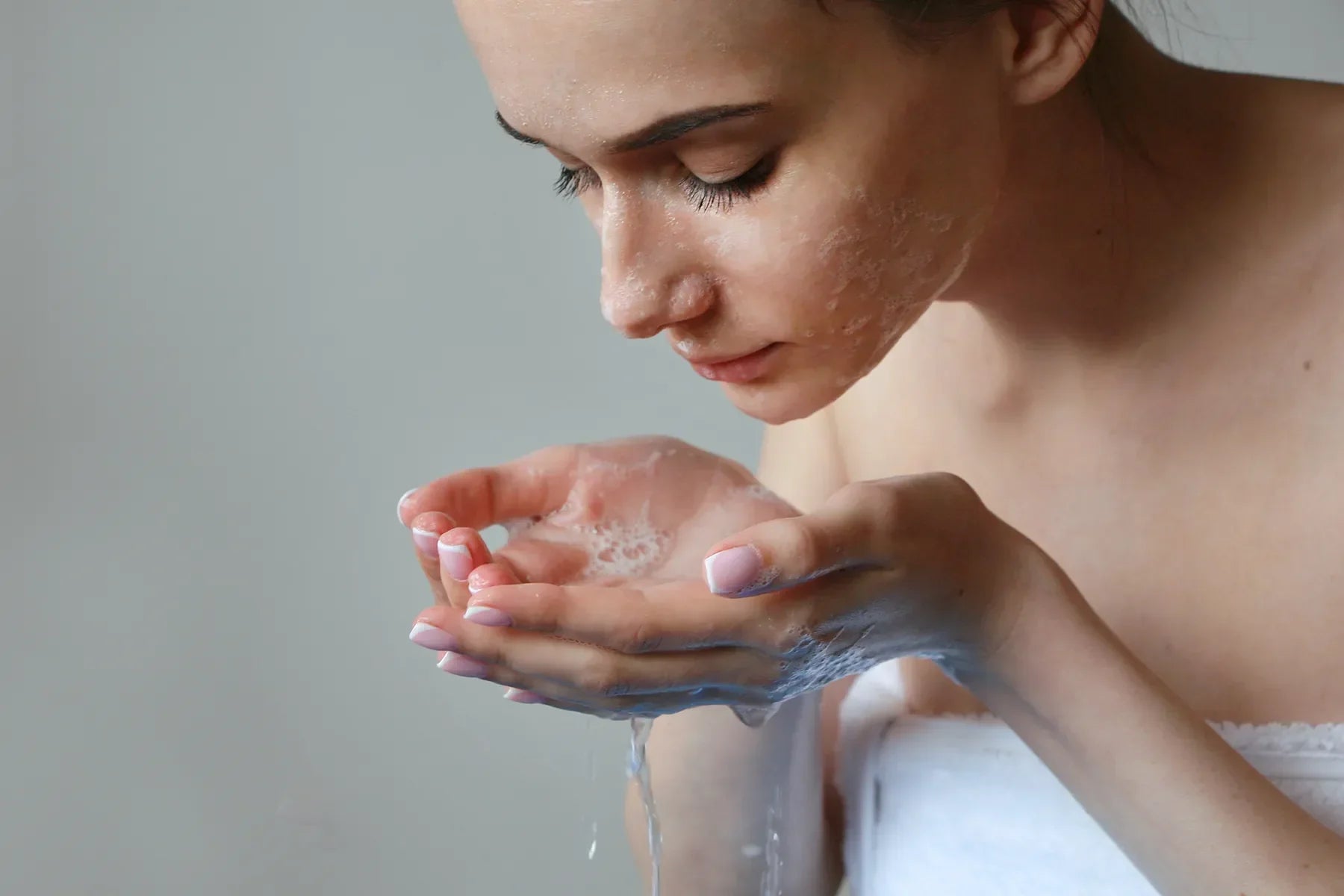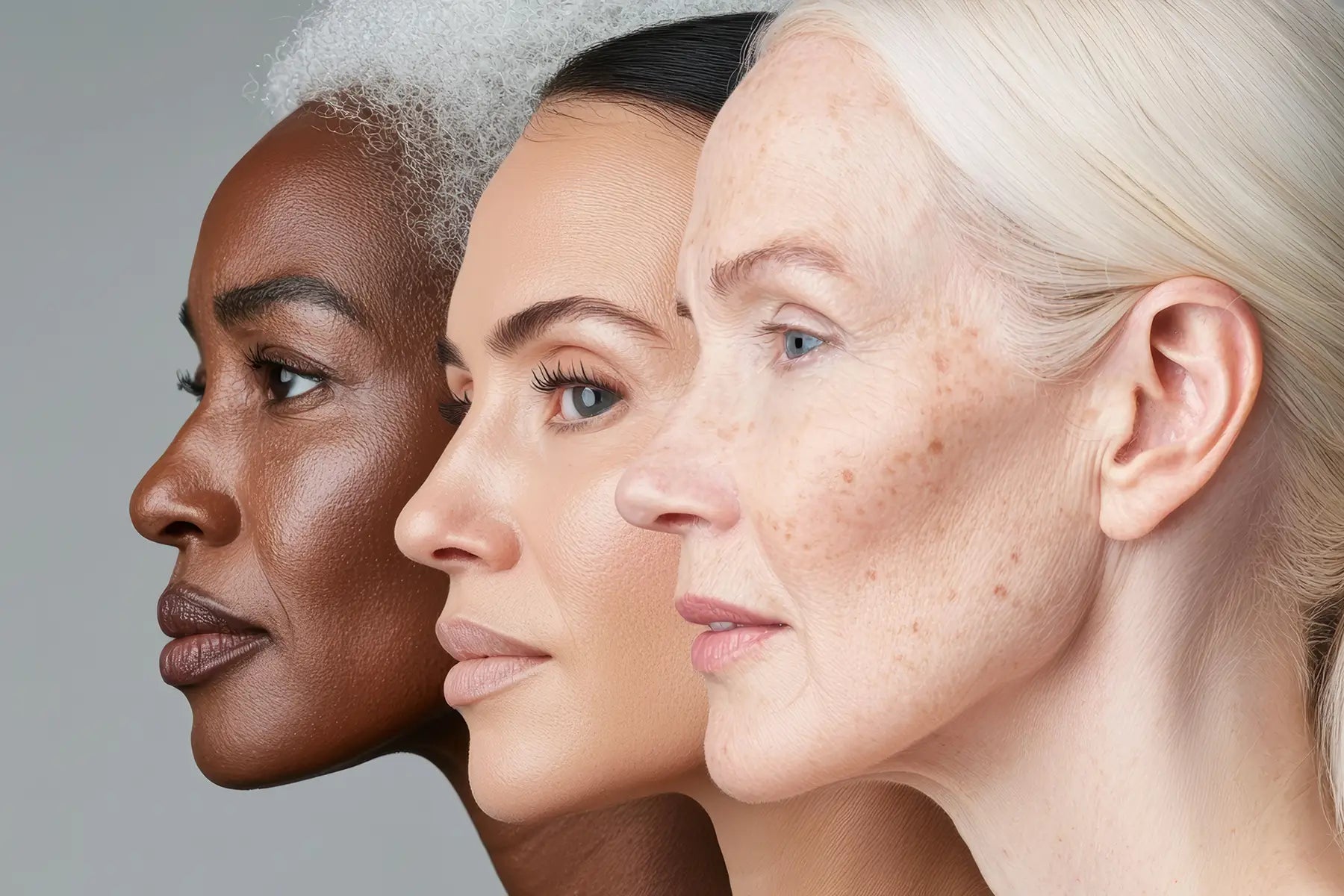The order in which you apply sunscreen and moisturiser plays a crucial role in ensuring your skin is well-protected from the sun. The key is to know your sunscreen type: mineral (also known as physical) or chemical. By applying them correctly, you’re giving each product the best chance to perform its job effectively.
Mineral sunscreen creates a physical barrier on the surface of your skin, reflecting the sun’s rays. To maintain its protective layer, apply your mineral sunscreen last, after your moisturiser. Chemical sunscreen needs to be absorbed into your skin to protect you from harmful UV rays. For it to work properly, apply your chemical sunscreen first, before layering on moisturiser.
Caring for your skin in the sun isn’t just about comfort; it’s about your long-term skin health and beauty.
–––––––––––––
When it comes to skincare, sunscreen is non-negotiable. It is the ultimate protector, shielding your skin from harmful UV rays that can cause premature ageing, sunburn, and even skin cancer. “But what about moisturiser?” You may be asking. “And how does the order of application change depending on whether your sunscreen is mineral or chemical?”
These are brilliant questions and Austin Skin has the answers for you.
Why Order Matters with Sunscreen and Moisturiser
Your sunscreen’s effectiveness is crucial for protecting your skin from sun damage. Unfortunately, applying products in the wrong order could inadvertently compromise its ability to shield you from harmful rays. By understanding whether your sunscreen is mineral or chemical, you can ensure it’s working at its best.
It’s also worth noting that certain moisturisers come with SPF, which can add an extra layer of protection. However, these should not replace a dedicated sunscreen. Think of SPF moisturiser as a bonus, not your main defence.
Your sunscreen’s effectiveness is crucial for protecting your skin from sun damage. Applying products in the wrong order could inadvertently compromise their ability to shield you from harmful rays. By understanding whether your sunscreen is mineral or chemical, you can ensure it’s working at its best.
Pros and Cons of Mineral Sunscreen
Also known as physical sunscreen, mineral sunscreen reflects UV rays. It sits on the surface of your skin where it creates a protective barrier. The active ingredients are typically zinc oxide and/or titanium dioxide. The pros of mineral sunscreen include:
- Starts working immediately after application (no need to wait).
- Less likely to cause irritation, making it ideal for sensitive skin.
- Offers broad-spectrum protection against both UVA and UVB rays.
- Environmentally friendly options are often available.
But there are cons:
- Can leave a white cast on the skin, especially on darker skin tones.
- Tends to feel thicker and heavier, which some people find less comfortable.
Pros and Cons of Chemical Sunscreen
Chemical sunscreen, on the other hand, absorbs UV rays and converts them into heat, which is then released from the skin. Common active ingredients include avobenzone, octanoate, and oxybenzone.
Pros:
- Lightweight and easy to blend into the skin, leaving no white residue.
- Often formulated with additional skincare benefits such as antioxidants.
Cons:
- Needs about 20 minutes to absorb and become effective.
- Can sometimes irritate sensitive skin.
- Certain ingredients may harm marine life, so look for reef-safe options.
At Austin Skin, you can find a curated selection of both mineral and chemical sunscreens tailored to suit Australian conditions and skin types.
How to Apply Moisturiser and Sunscreen
Now that you understand the difference between the two types of sunscreens, let’s talk about how to use them effectively with your moisturiser. The order of application matters because it impacts how well each product performs.
Mineral sunscreens act as a physical barrier, sitting on top of your skin to reflect UV rays. To ensure they can do their job properly, they should be the final step in your skincare routine. Applying anything over them – including moisturiser – can disrupt their protective layer and reduce their effectiveness. Here’s the correct order:
- Cleanse your skin to remove dirt and oil.
- Apply your moisturiser to hydrate and prep your skin.
- Finish with your mineral sunscreen. Gently pat it onto your skin to avoid disturbing the barrier it creates.
Chemical sunscreens need to be absorbed into your skin to work effectively. This means they should go on first, before your moisturiser. A layer of moisturiser applied underneath won’t interfere but applying it under your sunscreen could dilute its active ingredients and reduce its UV protection. Here’s the correct order:
- Cleanse your skin.
- Apply your chemical sunscreen. Wait a few minutes to let it absorb fully.
- Finish with your moisturiser.
If you’re unsure about your sunscreen’s formulation, check the label or ask a skincare expert at Austin Skin for advice.
Take the Next Step in Your Skincare Journey
Protecting your skin is one of the best investments you can make for your overall health and appearance. Whether you prefer mineral or chemical sunscreen, pairing it with the right moisturiser and applying them in the correct order can make all the difference.
At Austin Skin, we’re here to help you find the perfect sun care products for your lifestyle and skin type. Visit us for guidance or peruse our collection online today to explore our range of premium sunscreens and moisturisers. Your complexion will thank you!






